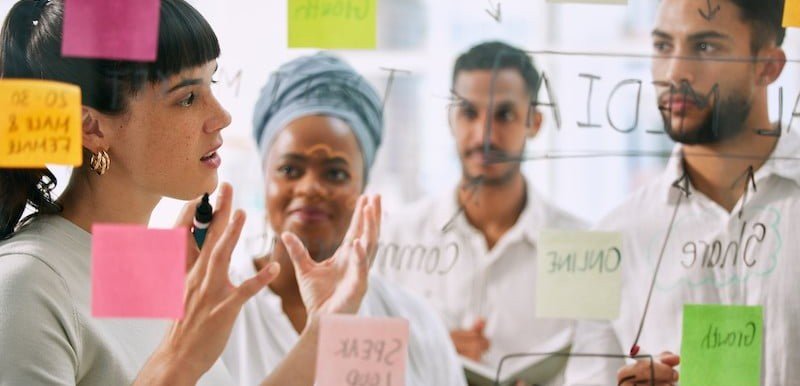L.E.A.P.S Model of Facilitator Best Practices

Master the Art of Facilitation with the L.E.A.P.S Model
Facilitation is an important skill for anyone who wants to lead meetings, workshops, or other group gatherings effectively. A good facilitator can create an environment where participants feel heard, respected, and engaged, and can help ensure that the group stays focused and productive. The L.E.A.P.S Model is used as a guide to facilitator best practices by:
- Listening actively
- Embrace neutrality
- Asking questions
- Paraphrasing
- Summarizing
Let’s take a closer look at what these mean in regards to meeting facilitation.
Listen Actively
Listening actively is another key component of good facilitation. This means paying attention to what participants are saying, both in terms of their words and their non-verbal cues. Active listening involves making eye contact, nodding in agreement, and using encouraging words like “Yes,” “I know what you mean,” and “mm-hmm.” It also involves paying attention to body language and tone, which can often reveal more about what someone is thinking or feeling than their words alone.
By listening actively, a facilitator can ensure that everyone feels heard and valued. This can also help to build trust and create a positive atmosphere, as participants see that their opinions and ideas are being taken seriously.
Embrace Neutrality
One of the most important aspects of being a good facilitator is staying neutral. This means making no judgments and showing no bias, either verbally or nonverbally. Neutrality is essential for creating an environment in which everyone feels comfortable participating and sharing their ideas. If a facilitator appears to be pushing their own agenda or expressing opinions, participants may be less likely to speak up or engage in the discussion.
To stay neutral, a facilitator should avoid making facial expressions or gestures that indicate agreement or disagreement. They should also use language that is neutral and impartial, and avoid using words that could be interpreted as critical or judgmental. For example, instead of saying “That’s a terrible idea,” the facilitator might say “Let’s explore other options.”
Ask Questions
Asking questions is another important tool for facilitators. This involves turning “tell” statements into “ask” statements, and using questions to help participants clarify their ideas. For example, instead of saying “I think we should do this,” a facilitator might ask “What are your thoughts on this?” or “Can you tell me more about that?”
Asking questions can also help to uncover root causes or get at deeper issues. For example, a facilitator might ask “What led to this?” or “How did you get this outcome?” These types of questions can help the group to explore a topic in more depth, and can lead to a more productive and meaningful discussion.
Paraphrase
Paraphrasing is another important tool for facilitators. This involves repeating back what you have heard in your own words, to validate or clarify what participants have said. This can be especially helpful when there is confusion or disagreement within the group.
For example, a facilitator might say “So, what I hear you saying is that you think we should do X.” They can then end with “Did I get it right?” or “What more might you add?” By paraphrasing, the facilitator can help to ensure that everyone is on the same page, and can help to build understanding and agreement within the group.
Summarize
Summarizing is crucial for creating closure and moving the group forward. This involves summarizing key themes, steps, or processes that the group has gone through. For example, a facilitator might say “So, to summarize, we have discussed X, Y, and Z, and we have agreed to proceed with A, B, and C.” Summarizing helps to create clarity, bring closure, and move the group forward towards their goals.
The S.L.A.P.S Model provides facilitators with the tools to effectively lead meetings, workshops, or group gatherings. By Staying neutral, Listening actively, Asking questions, Paraphrasing, and Summarizing we can create an environment where everyone feels heard, respected, and engaged, leading to a productive and focused group dynamic. Start applying the S.L.A.P.S Model today and become a master.
Upcoming Workshops
Let us Know
Do you have a unique meeting challenge not covered by one of our blog posts? We’re always looking for different dilemmas to discuss in our articles!